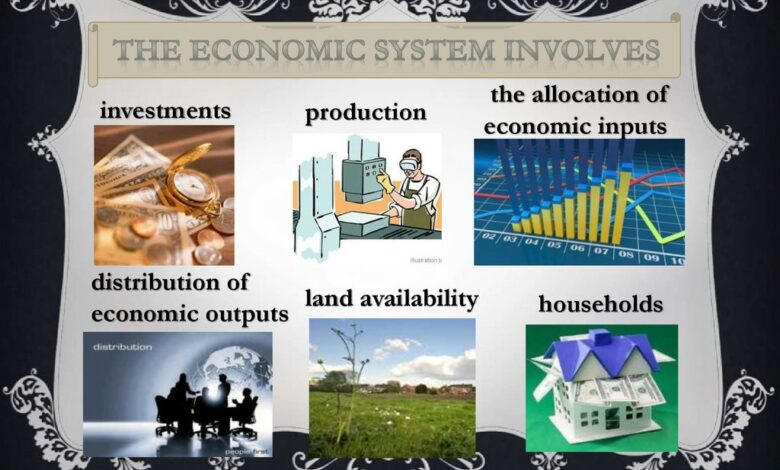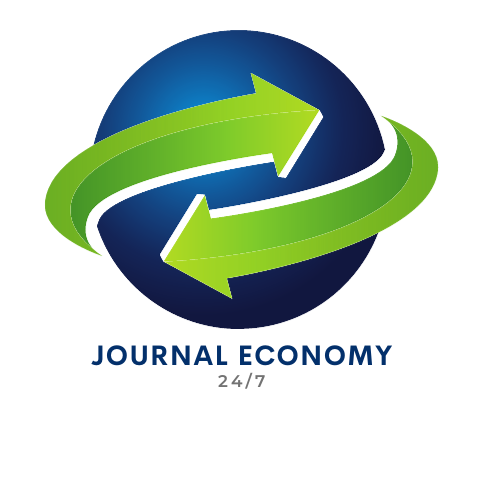
The Economic System in the United States is a complex and dynamic system that shapes the way goods and services are produced, distributed, and consumed in the country. Understanding how the U.S. Economic System operates is essential for grasping the country’s economic prosperity and challenges. In this blog post, we will explore the key aspects of the Economic System in the United States, including its defining characteristics, the role of government, the impact of market forces, challenges facing the system, the U.S. in the global economy, and the future of the Economic System.
Defining the U.S. Economic System
The United States operates under a capitalist economic framework, a system where private individuals and businesses own the means of production and operate for profit. Distinct from other economic models, the U.S. Economic System emphasizes the role of market dynamics and individual entrepreneurial spirit as central elements of economic activity and growth.
- At its core, this model thrives on the principles of supply and demand, where prices and the allocation of resources are determined by the transactions that occur within an open market. This setup encourages a competitive environment where innovation, efficiency, and productivity are rewarded, fostering an economy that is resilient and capable of rapid growth.
- This capitalist system is further defined by its encouragement of private investment and the accumulation of capital. Entrepreneurs and businesses are motivated to develop new products, services, and technologies, driven by the potential for profit. This not only contributes to a diverse and vibrant marketplace but also propels the economy forward through continuous innovation and adaptation.
- The dynamic interplay between consumers, businesses, and the market is a hallmark of the U.S. Economic System. Consumers exercise freedom of choice, influencing production and market trends with their preferences and purchasing power. Businesses, in turn, respond to these market signals by adjusting their strategies, offerings, and operations. This constant feedback loop between supply and demand, innovation, and consumer preference is what makes the U.S. economy robust and adaptable, capable of navigating both challenges and opportunities that arise in an ever-changing global landscape.
The Pillars of American Capitalism
The foundation of American capitalism is established on critical principles that are essential for its functioning and sustainability. These principles include the sanctity of private property rights, the efficacy of free markets, the necessity of competition, and the driving force of the profit motive. Private property rights are fundamental, ensuring that individuals and entities have the sovereignty to own, utilize, and transfer property as they wish, which is a cornerstone for economic freedom and security.
- Free markets are vital for the efficient allocation of resources, enabling buyers and sellers to engage in transactions with minimal governmental interference, thus allowing the laws of supply and demand to dictate market conditions. Competition is another critical pillar, serving as the catalyst for innovation, improvement in quality, and affordability of goods and services. It encourages firms to constantly strive for excellence and efficiency to maintain or enhance their market position.
- Lastly, the profit motive represents the heartbeat of the U.S. economic system, providing individuals and businesses the incentive to pursue success and expansion. It is this desire for profitability that drives businesses to innovate, improve productivity, and offer goods and services that meet or create consumer demands. Together, these pillars not only define the American capitalist system but also facilitate an environment where economic prosperity and growth are achievable, benefiting the broader society.
The Role of Government in the Economy
The United States government plays a nuanced and pivotal role in the functioning of its predominantly market-driven economy. Through the enforcement of laws and the implementation of regulations, it seeks to safeguard the interests of consumers, ensure fair labor practices, and protect the environment from undue harm. Such interventions are designed not to stifle economic activity but to maintain a level playing field and prevent abuses that could undermine the economic system’s integrity and sustainability.
- Public goods and services, which the market might fail to provide adequately due to their non-excludable and non-rivalrous nature, are supplied by the government. These include crucial infrastructure, national defense, and education, all of which form the backbone of a thriving economy by enhancing national security, facilitating commerce, and fostering a skilled workforce.
- Moreover, the government’s fiscal and monetary policies serve as tools to mitigate the impact of economic fluctuations. By adjusting spending, taxes, and interest rates, it aims to smooth out the boom-and-bust cycles inherent in a capitalist system, striving to stimulate growth during downturns and cool down inflationary pressures when the economy overheats.
- This strategic involvement extends to shaping economic policies that encourage innovation and investment in key sectors, thereby ensuring the economy’s competitiveness on a global scale. While the essence of the U.S. Economic System is its market orientation, the government’s role is indispensable in creating the conditions necessary for economic stability, growth, and the equitable distribution of wealth. Through these various functions, the government acts as both regulator and facilitator, demonstrating that a successful economy requires a balance between free market principles and thoughtful governmental oversight.
The Impact of Market Forces on the Economy
Market forces play a pivotal role in determining the economic trajectory of the United States. Supply and demand, the bedrock of the market economy, directly influence the production and pricing of goods and services. When consumer demand for a product rises, businesses respond by increasing supply, potentially leading to a growth in employment and investment in sectors experiencing heightened demand. Conversely, a decline in demand can prompt companies to reduce production, impacting jobs and economic activity in affected industries.
- Competition among businesses is another key market force, driving innovation and efficiency. It compels companies to continually improve their products and reduce costs to attract and retain customers. This competitive pressure not only leads to better choices for consumers but also stimulates economic growth by fostering innovation and efficiency across industries.
- Consumer preferences, ever-changing and diverse, also significantly impact the economy. Trends in consumer behavior can lead to the emergence of new industries and the decline of others. For instance, the increasing consumer interest in sustainable and eco-friendly products has spurred growth in renewable energy and organic farming sectors, illustrating how shifts in preferences can redirect capital and labor towards emerging industries.
- Technology plays a crucial role in shaping market forces. Technological advancements can disrupt traditional industries, create new markets, and alter the competitive landscape. The rapid pace of technological innovation requires businesses to adapt swiftly to remain competitive, underscoring the dynamic nature of the U.S. Economic System where market forces continuously influence the direction of economic activity.
Challenges Facing the U.S. Economic System
Among the pressing issues confronting the U.S. Economic System, income inequality stands out, with the gap between the wealthiest citizens and the rest of the population widening considerably. This phenomenon not only raises social and ethical concerns but also poses practical economic challenges, including reduced consumer spending power among the majority. Additionally, the national debt levels have escalated to unprecedented heights, raising alarms over fiscal sustainability and the potential impacts on future economic stability and growth. Environmental degradation further complicates the economic outlook, as the costs associated with climate change and resource depletion begin to manifest more tangibly, requiring significant adjustments in energy consumption, production methods, and infrastructure investment.
- Technological disruptions, while often seen as positive drivers of economic innovation and efficiency, also present challenges in the form of job displacement and the obsolescence of entire industries, necessitating substantial shifts in workforce development and education strategies. The rapid pace of automation and digital transformation calls for a resilient and adaptive approach to economic policy and business strategy to harness the benefits of technology while mitigating its potential downsides.
- Addressing these challenges is critical for ensuring the sustainability and vitality of the U.S. Economic System. It requires a concerted effort from both the public and private sectors to devise and implement policies that promote equitable growth, environmental stewardship, and the inclusive evolution of the workforce in the face of technological change.
The U.S. in the Global Economy
The role of the United States within the global economy cannot be understated. As a leading economic power, it exerts significant influence over international trade agreements. Global financial markets, and economic policies that have far-reaching effects beyond its borders. The interplay between the U.S. and other nations shapes economic trends. Influencing everything from currency values to commodity prices on a worldwide scale.
- American corporations are at the forefront of technological innovation and global. Business operations, establishing a network of economic activities that span continents. This global presence not only amplifies the U.S. economic influence. But also ties the nation’s prosperity closely to the health of the global economy. Fluctuations in international markets can directly impact American businesses and, by extension. The domestic economy, highlighting the interconnectedness of global economic systems.
- Foreign investment plays a crucial role in the U.S. economy, with international investors. Drawn to the stability and potential for growth within American markets. This influx of capital supports job creation, infrastructure development, and technological advancement within the U.S. Further entrenching the nation’s position as a global economic powerhouse.
- However, this global integration also subjects the U.S. to vulnerabilities, as economic downturns. Trade disputes, or geopolitical tensions in other parts of the world can adversely affect American economic interests. Navigating the complexities of international relations, trade policies, and global market dynamics is a continuous challenge for U.S. Policymakers, underscoring the importance of strategic diplomacy and economic policy in maintaining the country’s economic leadership on the world stage.
The Future of the U.S. Economic System
As we peer into the horizon, the U.S. Economic System stands at a crossroads, poised for transformation. Technological innovation continues to be a driving force, with emerging technologies such as artificial. Intelligence, robotics, and green energy poised to redefine industries, labor markets, and consumer habits. Demographic trends, including an aging population and shifts in immigration patterns, will further influence. The workforce and spending patterns, requiring adaptive strategies from businesses and policymakers alike.
- Globalization’s trajectory, amid rising protectionism and geopolitical tensions, will challenge the U.S. To balance national interests with the benefits of international cooperation and trade. The ongoing quest for sustainable economic practices presents both a challenge and an opportunity. As the push towards a greener economy opens new avenues for investment and innovation. But also demands significant transitions in energy, manufacturing, and transportation sectors.
- In response to these trends, the agility of the U.S. Economic System will be tested. The ability to foster an environment that encourages innovation, while ensuring equitable growth and addressing socio-economic disparities, will be paramount. Moreover, the role of education and workforce development in preparing Americans for the jobs. The future cannot be understated, necessitating a forward-looking approach to policy-making and economic planning.
- As these factors converge, the path forward for the U.S. Economic System will be shaped by its capacity to adapt, innovate, and maintain its foundational principles in an ever-evolving global landscape.
Conclusion
The U.S. Economic System stands as a testament to the nation’s enduring values of innovation, competition, and economic freedom. At its heart, this system is characterized by its capitalist foundations. Where market dynamics and individual enterprise drive prosperity and adaptability. Yet, it’s clear that the future of this system will be shaped by how well it addresses emerging challenges such as income inequality. Environmental sustainability, and the impacts of globalization and technological advancements.
The interplay between government intervention and market forces will continue to evolve. Necessitating a delicate balance to foster economic growth while ensuring social equity and environmental stewardship. As we navigate these complex dynamics, the resilience and agility of the U.S. Economic System will be critical in maintaining its global leadership and securing a prosperous future for all Americans. The journey ahead requires collective action, innovative policies, and a commitment. To adaptability in the face of an ever-changing economic landscape.





